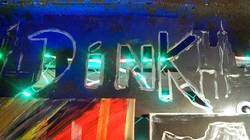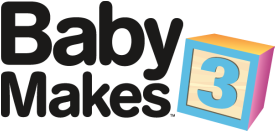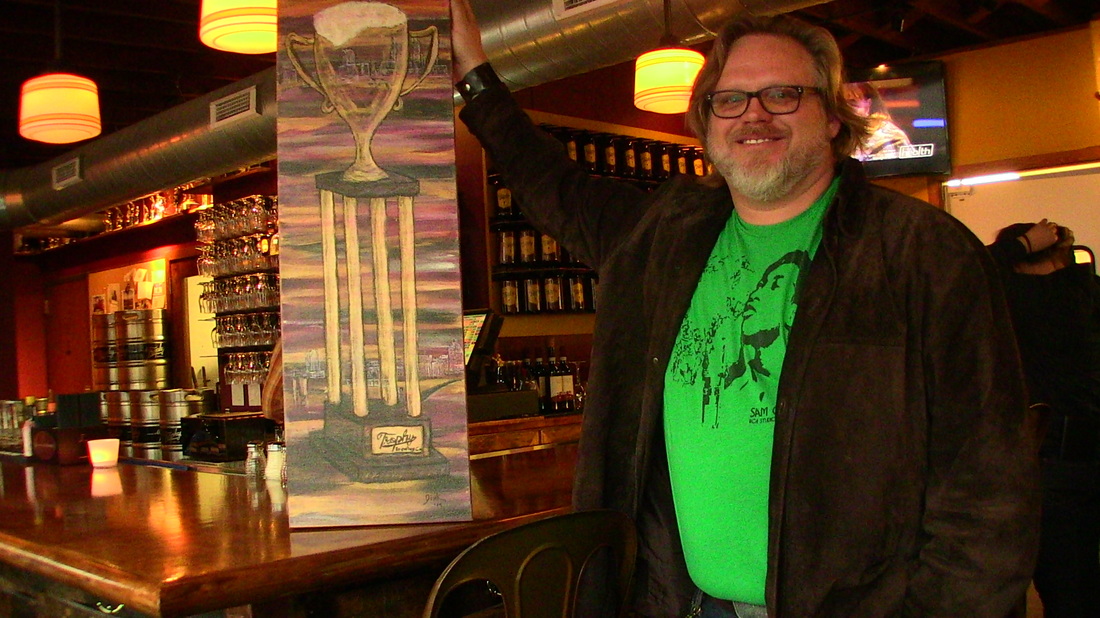You'll be shocked at what's really dangerous for children in your home. Don't skip our checklist of 10 safety hazards that could be deadly.1) Dishwashers The Danger: Dishwashers give children easy access to sharp knives and forks. Detergent can irritate your child's skin and eyes and can burn the lining of her mouth and esophagus if swallowed. "It's extremely corrosive and dangerous," warns Parents advisor Ari Brown, MD, author of Baby 411: Clear Answers & Smart Advice for Your Baby's First Year. Safe Strategy: Point knives, forks, and other sharp items downward in the utensil basket. Don't fill the dispenser with detergent until you're ready to run the load, and wipe out any that's left over after each cycle. Always replace the cap on the bottle tightly, and store it in a locked cabinet. Keep the dishwasher closed and latched when it's not in use. 2) Latex Balloons The Danger: Since 1973, more than 110 children have choked to death when chewing on or blowing up latex balloons. "Latex balloons are one of the worst things to choke on because they can conform to a child's throat and completely block breathing," explains Mariann Manno, MD, associate professor of clinical pediatrics and emergency medicine at the University of Massachusetts Medical School, in Worcester. Safe Strategy: Buy Mylar balloons instead of latex ones. Always supervise children playing with latex balloons, and never allow biting or chewing on balloons. Don't let children blow up latex balloons until 8 years old, and then watch closely to make sure they don't accidentally inhale one. When a balloon pops, immediately throw away the pieces. 3) Kitchen Ranges The Danger: An improperly installed range can fall forward if your child leans on the front of it or climbs on the oven door. Toddlers have been critically injured when they tipped over a stove and were doused with a pot of scalding water. Safe Strategy: Make sure free-standing or slide-in ranges are installed with anti-tip brackets that secure the rear legs to the floor. Manufacturers are required to provide these brackets on ranges made after 1991, but you can contact the company for the parts, or order them from an appliance-parts store. Keep the oven door closed when not using the oven, and never allow your child to lean on or climb on the range or oven door. 4) Soft Bedding The Danger: Fluffy comforters and bumper pads may make a crib cozy, but soft bedding can mold around babies' faces and suffocate them. Although deaths from SIDS have dropped dramatically thanks to the widely publicized "Back to Sleep" campaign introduced in 1991, as many as 900 infants suffocate in soft bedding each year, according to the Consumer Product Safety Commission (CPSC). Safe Strategy: Place babies on their backs on a firm mattress covered with a tight-fitting mattress pad and sheet. Don't put pillows, comforters, thick bumper pads, or soft toys in the crib until they are a year old. Keep them warm with a lightweight blanket tucked tightly around the mattress, or dress them in a blanket sleeper. 5) Hand-Me-Down Baby Gear The Danger: Used toys and baby equipment may have broken or missing parts, or may not meet current safety regulations. Jamie Schaefer-Wilson, author of The Baby Rules: The Insider's Guide to Raising Your Parents, unknowingly placed her 12-month-old in a high chair without correct safety straps. "She started to slip down, and her head and neck became wedged between the tray and the high chair. Fortunately we caught her in time, or she could have been seriously injured." Safe Strategy: Inspect secondhand items for damaged or missing parts. Make sure strings, straps, and cords are shorter than 7 inches. Visit cpsc.gov to confirm the item meets current safety standards. Don't let children play with decades-old metal or painted toys, which may contain poisonous lead. 6) Bath Seats and Rings The Danger: Bath seats and rings help a baby sit up in the tub, but they can be a drowning hazard if you leave babies alone for even a few seconds. The suction cups on the bottom can suddenly release and allow them to tip over or slide between the legs and become trapped underwater. Between 1983 and 2003, 106 babies drowned because they were left unattended in bath rings or seats, according to the CPSC. Safe Strategy: Always stay within arm's reach when your baby's in the tub, and make sure other caregivers do the same. "Bath seats and rings are not safety devices," Dr. Manno says. 7) Bath and Baby Oils The Danger: Some bath and baby oils contain liquid hydrocarbons, which can cause a serious pneumonia-like condition, irreversible lung damage, and even death if a child aspirates the substance into their lungs. Safe Strategy: The CPSC requires child-resistant packaging for products containing hydrocarbons. Read labels and store all bath and baby oils out of your child's reach, even if they're in child-resistant packaging. (The same goes for other household and cosmetic products containing liquid hydrocarbons or mineral oil, such as some makeup removers, massage oils, and nail-polish dryers.) "Child-resistant caps don't always keep kids out -- they just slow them down," says Karen Sheehan, MD, an emergency-room physician at Children's Memorial Hospital, in Chicago. 8) The Family Dog The Danger: About 100,000 children under age 10 are treated in hospital emergency rooms every year for dog-bite-related injuries, according to the CDCP. The majority of attacks happen in familiar places by a dog that belongs to the victim's family or friend. Pet food and pet toys with small parts can also be choking hazards. Safe Strategy: Never leave children alone with a dog. Having dogs spayed or neutered can reduce aggressive tendencies. Teach children to be gentle with dogs and to never tease, corner, or disturb a dog that's eating, sleeping, or caring for puppies. Until children are 3, don't buy pet toys with small parts that can be pulled off. Remove hard dog food when pets are done eating. 9) Power Windows The Danger: Car windows cause hundreds of children to lose their fingers or crush limbs each year. They've been associated with at least 28 deaths, according to Kids and Cars, a nonprofit child-advocacy group. If children put their head or hand out the window, then accidentally lean on the switch, the window can close on them. Safe Strategy: Use the lock function so children can't operate power windows. "Before you raise a window from the driver's seat, do a head- and finger-check first," says Janette Fennell, founder and president of Kids and Cars. Never leave your child alone in a vehicle. 10) Pocketbooks and Purses The Danger: Any cosmetic bag, backpack, or suitcase that someone brings into your home may contain items that could poison, choke, or injure children, such as medications, change, hard candy, pen caps, safety pins, nail scissors, and matches. "It only takes a second for a small child to get into something that's new and exciting while the adults are busy talking," says Bridget Clementi, injury-prevention manager at Children's Hospital of Wisconsin, in Milwaukee. Safe Strategy: When friends and relatives visit, place purses and luggage in a closet or room where your child can't get to them. All content, including medical opinion and any other health-related information, is for informational purposes only and should not be considered to be a specific diagnosis or treatment plan for any individual situation. Use of this site and the information contained herein does not create a doctor-patient relationship. Always seek the direct advice of your own doctor in connection with any questions or issues you may have regarding your own health or the health of others. All Above Information is provided by www.Parents.com
1 Comment
Indoor air is three times more polluted than outdoor air,
and according to the EPA, is considered one of the top 5 hazards to human health. Paints and finishes are among the leading causes. Paints and finishes release low level toxic emissions into the air for years after application. The source of these toxins is a variey of volatile organic compounds (VOCs) which, until recently, were essential to the performance of the paint. New environmental regulations, and consumer demand, have led to the development of low-VOC and zero-VOC paints and finishes. Most paint manufacturers now produce one or more non-VOC variety of paint. These new paints are durable, cost-effective and less harmful to human and environmental health. Benefits Health. Reduced toxins benefit everyone, including those with allergies and chemical sensitivities. Environment. Reduces landfill, groundwater and ozone depleting contaminants. Effective. Low-VOC products perform well in terms of coverage, scrubability and hideability (covering flaws on previous coats). Water-Based. Easy cleanup wtih soap and warm water. Little or No Hazardous Fumes. Low odor during application; no odor once cured. No off-gassing. Painted areas can be occupied sooner, with no odor complaints. Not Deemed Hazardous Waste. Cleanup and disposal greatly simplified. Types of Non-Toxic Paints and FinishesThe term "non-toxic" is used here in its broadest sense. With paints and finishes, it's more a matter of degree. Even Zero-VOC formulations contain some small amounts of toxins. Here are three general categories of non-toxic (or low-toxic) paints: Natural Paints, Zero VOC, and Low VOC Natural Paints and Finishes - These are paints made from natural raw ingredients such as water, plant oils and resins, plant dyes and essential oils; natural minerals such as clay, chalk and talcum; milk casein, natural latex, bees' wax, earth and mineral dyes. Water-based natural paints give off almost no smell. The oil-based natural paints usually have a pleasant fragrance of citrus or essential oils. Allergies and sensitivities to these paints is uncommon. These paints are the safest for your health and for the environment. Unearthed Paints - nontoxic, vegan natural paints (including clay paint and lime paint), lime plasters and wood finishes that are 100% Zero-VOC. Made in Germany with fully disclosed ingredients. (www.unearthedpaints.com) Aglaia - plant-based natural paints and finishes for many applications. Available throughout the UK. No US distribution. (www.aglaiapaint.com) Livos - organic paint, stains, oils and waxes made using all natural ingredients. Coatings are linseed oil and citrus oil based, non toxic, low VOC and are designed primarily for wood. (www.livos.us) Auro - solvent-free, water-based natural paints and primers, finishes, stains and adhesives. Ships to US and Canada. (www.aurousa.com) EcoDesign's BioShield - line of natural paints and finishes. (www.bioshieldpaint.com) Weather-Bos - line of natural stains, finishes and paints. Blends of natural oils and resins designed to adhere to the wood, forming a monolithic bond. (www.weatherbos.com) SoyGuard - soy-based exterior stains, water repellants and sealers for wood surfaces. (www.soyguard.com) Silacote - made from natural mineral compounds, for use on masonry, concrete and wallboard; interior/exterior. (www.silacote.com) Anna Sova - natural paints from milk casein, titanium dioxide and food-grade ingredients. (www.annasova.com) Green Planet Paints - high performance natural paints for interiors based on plants and minerals. (www.greenplanetpaints.com) The Real Milk Paint Company - non-toxic paint made with milk protein, lime, clay and earth pigments. Masters Blend - natural wood finishes based on tungnut oil, for woodwork, furniture, carvings, cutting boards, brick and concrete. (www.mastersblendfinish.com) Zero VOC - Any paint with VOC's in the range of 5 grams/litre or less can be called "Zero VOC", according to the EPA Reference Test Method 24. Some manufacturers may claim "Zero-VOC's", but these paints may still use colorants, biocides and fungicides with some VOC's. Adding a color tint usually brings the VOC level up to 10 grams/liter, which is still quite low. Earthpaint - Nontoxic paint, wood finish, floor finish, deck stain. www.earthpaint.net ECOS Paints - Zero-VOC and zero ethylene glycol paints, varnishes and wood stains. All odorless, organic, non-toxic and non-allergenic. Also specialty VOC absorbing paints. Ecos Paints is a leader in the field of VOC-free, organic paints, and ships direct to homes throughout the US and Canada, the UK, France and Germany. www.ecospaints.net AFM Safecoat - Flat interior latex; semi-gloss interior enamel. www.afmsafecoat.com ICI Lifemaster 2000 - Flat, Eggshell, semi-gloss interior; primer.(800 984-5444) Best Paint Company - Zero-VOC Interior paints, primers and specialty products (faux glaze, varnish replacement, etc) and Low-VOC Exterior paints and primers. (www.bestpaintco.com) ICI Decra-Shield - exterior zero-VOC paints. (800 984-5444) Kelly-Moore Enviro-Cote - ENVIRO-COTE line of paints are zero-VOC. (916 921-0165) Devoe Wonder Pure - odor-free interior acrylic latex paints. (www.devoepaint.com) Enso- Ultra low odor, zero-VOC, ethylene glycol-free interior paints. Primer, flat, eggshell, and semi-gloss. Manufactured by Dunn-Edwards. (www.dunnedwards.com) American Pride - Zero-VOC interior latex and acrylic enamel paints. (www.americanpridepaint.com) Sherwin Williams - new HARMONY line of zero-VOC low-odor latex interior paints. Flat, eggshell, semi-gloss and primer. (www.sherwin.com) Frazee Paint EnviroKote - line of interior zero-VOC paints: semi-gloss, flat, and primer. Allied PhotoChemical - supplies zero-VOC, UV-curable paints, inks and coatings to manufacturers. (www.alliedphotochemical.com) Olympic Paint and Stain - Zero-VOC Olympic Premium interior line. Yolo Colorhouse - Zero-VOC, low-odor, premium interior paint. (yolocolorhouse.com) Green Planet Paints - Zero-VOC, clay-based interior paints. (greenplanetpaints.com) Benjamin Moore Pristine EcoSpec - Zero-VOC, under 1 gram/liter. Flat, eggshell, semi-gloss finishes and a primer. Mythic Paints - Zero-VOC, interior and exterior paints, primers. (mythicpaint.com) PPG Architectural Finishes - Pittsburgh Paints Pure Performance line Homestead Paints - Zero-VOC, flat and low-sheen interior paints. (homesteadhouse.ca) Vista Paint - Zero-VOC low-odor Carefree Earth Coat line EarthSafePaints - Zero- and Low-VOC line of craft paints and finishes, marine finishes, home decor paints. (earthsafefinishes.com) Low VOC - Low VOC paints, stains and varnishes use water as a carrier instead of petroleum-based solvents. As such, the levels of harmful emissions are lower than solvent-borne surface coatings. These certified coatings also contain no, or very low levels, of heavy metals and formaldehyde. The amount of VOC's varies among different "low-VOC" products, and is listed on the paint can or MSDS. Paints and stains, to meet EPA standards. must not contain VOCs in excess of 200 grams per litre. Varnishes must not contain VOCs in excess of 300 grams per liter. As a general rule, low VOC paints marketed by reputable paint manufacturers usually meet the 50 g/L VOC threshold. Paints with the Green Seal Standard (GS-11) mark are certified lower than 50 g/L (for flat sheen) or 150 g/L (for non-flat sheen). Low VOC paints will still emit an odor until dry. If you are particularly sensitive, make sure the paint you buy contains fewer than 25 grams/liter of VOC's. Benjamin Moore Aura - Low VOC, covers most surfaces in a single coat, durable, scrubbable. Benjamin Moore Saman - Water-based wood stains Cloverdale Horizon - Flat, Eggshell, Semi-Gloss interior enamels Cloverdale EcoLogic - Low VOC, under 10 grams/liter. Flat, Eggshell, Semi-Gloss interior. Miller Paint - Acro solvent-free interior acrylic line OIKOS Paints - Interior and exterior paints, low voc, solvent-free. (www.oikos-paint.com) Timber Ox Green - vegetable oil based, low voc wood stain and preservatives. (www.timberoxinfo.com) VOC Absorbing Paints - these specialty paints contain an active ingredient that absorbs VOCs such as formaldehyde. The VOCs remain trapped (cannot be removed) within the product indefinitely. They are: Atmosphere Purifying Wallpaint (APP) - a matt/flat finish wallpaint designed to absorb from underlying surfaces and also from the atmosphere in the painted room. MDF Passivating Primer (MDFP) - a base-coat/primer for man-made or remanufactured wood type products (like MDF and ply) which typically off-gas formaldehyde and other VOCs. Anti-Formaldehyde Radiator (AFR) Paint - new hot water radiators can off-gas formaldehyde for many months (sometimes as long as two years). AFR traps this before it can enter the atmosphere. MDFP and AFR are remedial solutions for particular situations. APP is very commonly used over existing paints, or in spaces with new carpets or furnishings that are off-gassing. It is frequently applied to a ceiling (being a matt finish it looks like any other wall/ceiling paint) in cases where other items in the room are the cause of the problem. APP, MDFP and AFR paints are available at ECOS Paints. ECOS Paints ships direct to homes throughout the US and Canada, the UK, France and Germany Ethylene Glycol - a solvent used in latex paints, is listed as a hazardous substance and a toxic air contaminant under many federal and state regulations. A clear, colorless, odorless liquid, ethylene glycol and its vapor can be toxic to humans. Exposure may cause irritation to the skin, eyes, nose, throat and lungs, and allergic reactions are possible. Overexposure could lead to nausea, vomiting, drowsiness, coma, and respiratory failure. Repeated overexposure can permanently damage the kidneys. Ethylene glycol-free paints are available at Dunn Edwards. Non-toxic Paint Strippers Most paint strippers are caustic - they work by melting the paint. The active ingredient, methylene chloride, is a potential carcinogen. A new generation of biodegradable paint strippers is now entering the market. They are water-soluble and noncaustic. Some examples are: CitriStrip - from Specialty Environmental Technologies, in Auburn Hills, MI. Woodfinisher's Pride - from W.M.Barr & Co, in Memphis, TN. Ameristrip - from Safe Alternatives Corp, in Ridgefield, CT. Peel Away - from Dumond Chemicals, in New York. (212-869-6350) RemovAll and Bio-Wash - from Napier Environmental Technologies in Vancouver BC. The active ingredient in these products is N-Methylpyrrolidone (NMP), an organic solvent. Rather than burning or melting, the compound chemically changes the paint itself, softening it for easier removal. While considered an organic solvent, NMP is still has potential health hazards. While the toxic effects of MNP on humans have not been well studied, MNP is toxic to the reproductive systems of male and female test animals. Based on the animal tests, you should treat NMP as a potential human reproductive hazard. Pregnant women especially should use extreme care or avoid using paint strippers entirely. These new strippers are more expensive than their traditional counterparts, and they take longer to work. PLEASE NOTE: Every attempt has been made to ensure accuracy of the data listed on this page. However, a listing on this page should not be construed as a recommendation or endorsement by NurseryFacts.com. All information Provided by: http://eartheasy.com/  I would like to everyone who supported my RAW Raleigh Art showcase February 6th at Lincoln Theater. It was the time of my life! I saw so many old friends and met some new ones! Below is some of the video from the event of you missed it. I'll be doing another RAW show in a different city within the year!  The night after the big show, I got to do a live painting and have my art displayed at London bridge Pub for First Friday! I'll let you know where I decide to go for First Friday in March! Tomorrow night will be one of the biggest art shows I have ever been a part of: the Raleigh RAW Artists Season Launch at Lincoln Theater! I am so excited to have this opportunity and appreciate everyone's support so far! Here's the video by Just Jack Media that will be on display during that show. You can still get tickets for $20 at the door! Starts at 8pm. Hope to see you there and I will post more videos and pictures from the event in the weeks to come! www.ralwighr It's been an exciting couple of weeks! I presented a painting to my friends at Trophy Brewing Company. You can see a quick video about it below: I also just went to the walk-through for the RAW Raleigh Artists Showcase that's coming up Feb. 6th at Lincoln Theater. We got our space assignments and now it's time to figure out how to put it all together. Seeing the space and the other artists really got me pumped up! You can support me by buying your tickets here: www.rawartists.org/dinksart.
And this weekend, I am assisting with a rock carving class at the North Carolina Museum of Art with Paris Alexander. I'm almost finished with my own carving of the Raleigh skyline in alabaster. Part 2 of that video to come soon! I am looking forward to more great things in 2014! Thanks for your support! |



 RSS Feed
RSS Feed
